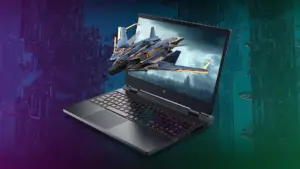Acer has announced a suite of new developer tools for its SpatialLabs Pro devices, targeting the expansion of the glasses-free, stereoscopic 3D experience. The latest update includes support for a Unity plug-in, certification for its OpenXR runtime, and the introduction of the Acer SteamVR Bridge.
The Unity plug-in is a significant addition to Acer’s SpatialLabs Pro devices, offering developers the opportunity to create stereo 3D content and applications across a range of sectors. Unity is widely recognized for its versatility in building 3D experiences, making it a go-to tool for professionals in fields such as education, architecture, medicine, and more. The plug-in now enables these developers to present their 3D models on SpatialLabs Pro devices without the requirement of specialized glasses.
Acer’s SpatialLabs Pro devices have achieved conformance with OpenXR via the successful certification of the company’s OpenXR runtime. This update adds further options for the extended reality (XR) developer community, allowing them to showcase their work on high-resolution, glasses-free stereoscopic 3D displays. The OpenXR runtime is accessible for SpatialLabs Pro device users for OpenXR-compatible applications, including Autodesk VRED and Blender.
The newly announced Acer SteamVR Bridge driver is designed for developers of VR applications. This tool will enable the conversion of VR creations to run on SpatialLabs Pro devices, removing the need for VR headsets. Acer’s SpatialLabs Pro users can utilize the SteamVR Bridge with Nvidia Omniverse to facilitate workflows and expand viewing options for complex graphics and simulations.
| Feature | Specification |
|---|---|
| Display | Glasses-free Stereoscopic 3D display |
| Supported Platforms | Unity, Unreal, OpenXR-compatible applications, NVIDIA Omniverse |
| Compatibility | Acer SteamVR Bridge, Acer OpenXR Runtime |
| Developer Tools | Unity Plug-in, Acer SteamVR Bridge |
| Primary Usage | Education, Architecture, Medicine, Various VR applications |

